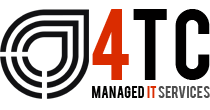Get more from remote working with MS Teams
As a result of the COVID-19 outbreak, which forced millions of individuals to work remotely in the early 2020s, a number of organisations are now familiar with collaboration tools that facilitate flexible work schedules. One of these is Microsoft Teams, which has since taken the lead as the world’s favourite business communication tool. Given its extensive lateral compatibility with the rest of Microsoft 365, a multitude of unique, productivity-boosting features, and compatibility with hundreds of third-party applications, it is not difficult to comprehend why the platform is used by more than 1 million organisations worldwide.
Yet, many organisations have discovered that their preferred method of working is remotely now that the pandemic limitations have subsided.
Here are a few strategies to make the most of your Microsoft Teams remote work.
Instant Messaging
The instant chat capabilities of Microsoft Teams serve as its core. Teams gives you the option to start a chat within a Teams channel or create a separate chat with a group of your choice, allowing you to start a dialogue thread for any project or objective.
Let’s examine some of the features that Teams offers to improve the collaborative nature of instant messaging as chat functionality is available on many platforms.
Options for Message formatting
In the chat component of Microsoft Teams, you have a number of formatting options to personalise your messages. You can emphasise text by making it bold or highlighting it, adding bullets to lists, and more. A message can be marked as “important” or “urgent” to notify your group that it contains essential information.
With the “chat box,” users can do more than just exchange messages.
Several useful features are included in the Teams chat interface by default.
It enables your team to use the built-in co-authoring tool to collaborate on a document in real time by allowing you to upload files to your chat thread. Any files you put into a chat will be saved there right away and stored in the “files” tab at the top of the chat screen for easy retrieval.
Moreover, meetings may be booked directly from the chat box, and by connecting apps, more functionality can be provided. For instance, it is possible to add the “Forms” app to launch tests and surveys directly from a chat thread.
Another useful option is the ability to share your screen with the chat thread. This handy feature is perfect when your group would benefit more from an instructive example rather than a lengthy, complex written explanation. It may be accessed from the upper right of the chat screen (shown below).
Intuitive chat search features
Occasionally a message or conversation thread is lost to the sands of time. You shouldn’t be concerned because Teams makes retrieving such correspondence quick and simple. At the top of the chat screen is a search box that may be used to find messages and threads using keywords or the names of group members who are taking part in the conversation.
You can use a filtering tool to help you identify elusive messages if that doesn’t work. Filter messages to focus on specific Teams or Channels, search for messages with attachments or where you’ve been referenced or apply date ranges.
Route emails into your group chats
With Teams, you can have the benefits of both email and instant chat in real time. A related autogenerated email address that can be used to send and forward emails right into the chat thread can be requested when you create a channel in Teams. Email messages and any associated files are immediately kept in the channel’s files tab for convenient access and retrieval when they come in your thread. Even seasoned Microsoft Teams users rarely make advantage of this useful feature.
Consolidate apps with Microsoft Teams
4TC take time to understand the daily challenges that your business faces. We then provide cost-effective tech solutions to these issues that will help you save time, protect vital data, and enable you and your staff to be more effective with your time management. Utilising your IT to its full potential is essential to guarantee that you and your business can thrive and grow into the future. If you would like to find out more on how 4TC Services can provide affordable tech management to your business, drop us an email or call us now for a full demonstration.

